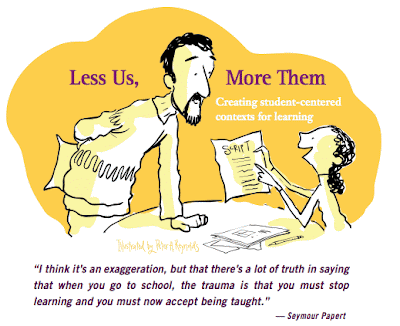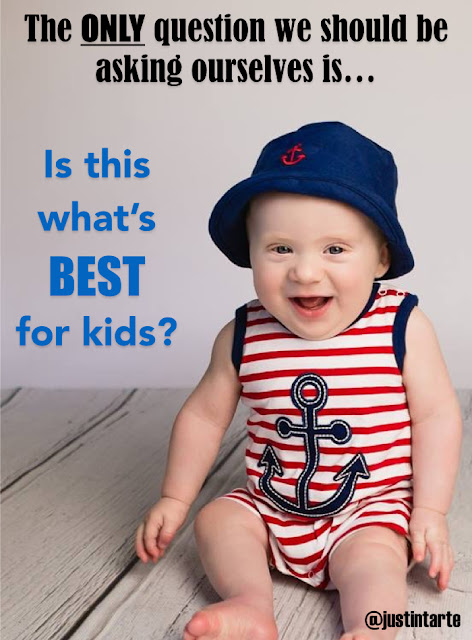A student-centered classroom allows students to be an integral part of the assessment development process. This doesn't necessarily mean every assessment is created and designed by students, but it does mean there is a collaborative and joint venture of teachers and students in the planning and implementation stages of assessments. Students who help to design and create their assessments will find the assessments to be more meaningful, and typically students end up creating assessments that are more challenging than what teachers would have created anyway...
A student-centered classroom focuses on finding solutions to real-world problems. Too often our classroom focus is on solving problems that lack relevance and purpose in the eyes of students. The student-centered classroom addresses real-world problems that affect or will affect students. This in turn will provide meaning and context to student-driven learning, which then will increase levels of engagement and overall student involvement.
A student-centered classroom is not about what the teacher is doing or what the teacher has done; it's about what the students are doing and what the students can do in the future. We all have experienced the teacher observation model that focuses just on what the teacher is doing, but more and more models are now focusing on what the students are doing. Obviously, what the teacher does affects and impacts what the students are doing, but the most important piece is what the students are doing or are able to do as a result of what the teacher is doing.
A student-centered classroom embraces the notion that there are multiple ways to accomplish an individual task. When we limit and confine students to following a certain and specific path, we ultimately end up limiting their levels of ownership, innovation, and creativity. A student-centered classroom allows, encourages, and embraces the multitude of paths one can take to solve a given problem. This also allows for students to follow their strengths and their interests when completing a task.
A student-centered classroom firmly believes that there is a partnership and a strong level of trust between educators and students. The teacher no longer is and hasn't been for a while the 'smartest' person in the room. Because of this, we need to continue forging a partnership between the teachers and the students and accept an equal playing field when it comes to learning, exploration, and discovery. This partnership is built on trust, and trust happens when we are vulnerable and open to learning with and from others...
A student-centered classroom is not about what the teacher is doing or what the teacher has done; it's about what the students are doing and what the students can do in the future. We all have experienced the teacher observation model that focuses just on what the teacher is doing, but more and more models are now focusing on what the students are doing. Obviously, what the teacher does affects and impacts what the students are doing, but the most important piece is what the students are doing or are able to do as a result of what the teacher is doing.
A student-centered classroom embraces the notion that there are multiple ways to accomplish an individual task. When we limit and confine students to following a certain and specific path, we ultimately end up limiting their levels of ownership, innovation, and creativity. A student-centered classroom allows, encourages, and embraces the multitude of paths one can take to solve a given problem. This also allows for students to follow their strengths and their interests when completing a task.
A student-centered classroom firmly believes that there is a partnership and a strong level of trust between educators and students. The teacher no longer is and hasn't been for a while the 'smartest' person in the room. Because of this, we need to continue forging a partnership between the teachers and the students and accept an equal playing field when it comes to learning, exploration, and discovery. This partnership is built on trust, and trust happens when we are vulnerable and open to learning with and from others...



